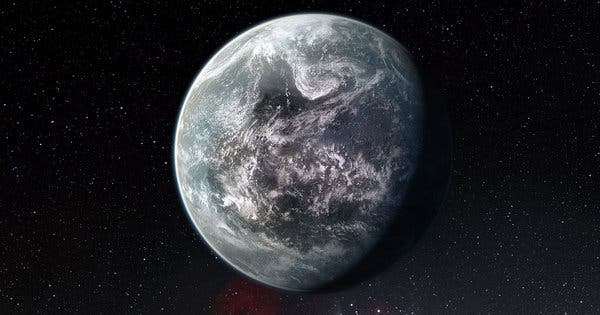
The HARPS team at the La Silla Observatory in Chile recently discovered a slew of 50 exoplanets, all in one go. Among these highly promising finds, lies a rocky planet, with a mass 3.6 times that of our Earth, which might offer conditions to support life.
Dubbed HD 85512b, the super-Earth planet is located in the constellation Vela, just 38 light years away – close enough for the Universe’s metrics. The planet is right inside what scientists consider it to be the inhabitable zone, orbiting its sun at a quarter of the distance that Earth circles the Sun, taking 58 days to make a year. Early calculations suggest it has an average temperature around 77 degrees Fahrenheit, a fact which in turn suggests it has 50% cloud cover — both very Earthlike qualities.
The community isn’t too quick on hailing the discovery of Earth #2, though. It will take years of extra data gathering and interpreting, as well as observatories with capabilities no telescope today has. Then there’s always the case of Gliese 581g, the previously top candidate for an Earth-like planet, whose discovery has subsequently been cast under the shroud of doubt and since then been declared unconfirmed. Another mishap like that of Gliese 581g is unlike to happen twice, however, which personally makes me, at least, confident we might just be on the brick of one of the most remarkable discoveries of the new century.
HD 85512b and the other exoplanets, 16 of which are in the Super-Earth category (planets with a mass ranging from 2 to 10 times that of the Earth), were discovered by a team of astronomers based at the University of Geneva and led by Stephane Udry and Michel Mayor. To find these planets, astronomers used a sensitive spectrograph known as HARPS (High Accuracy Radial velocity Planet Searcher), which works by detecting the impercetible wobbles of light that occur whenever a planet passes along a star.
This particular technique, however, offers insights only regarding a planet’s mass. To gather another important metric, like its size or composition, you need a more advanced means of observation, like the Kepler telescope, which is currently positioned towards a non-adjacent part of the galaxy, unfortunately.
Without a doubt, in the years to come, HD 85512b will be a very interesting target to follow in the sky.
source: times






